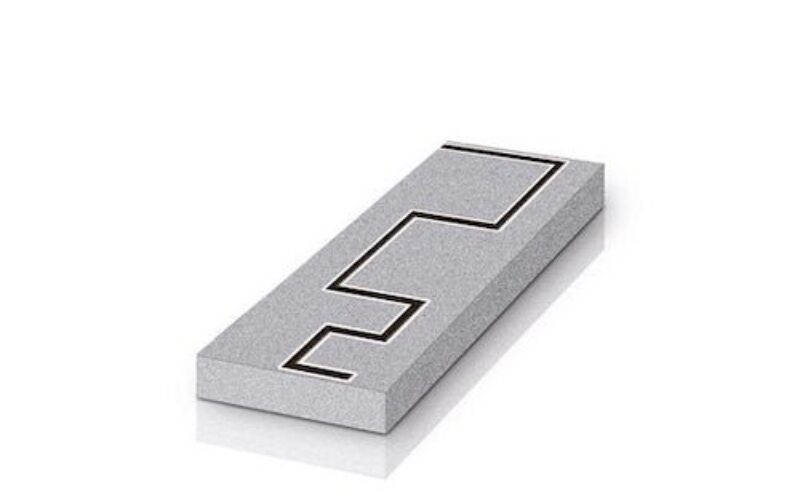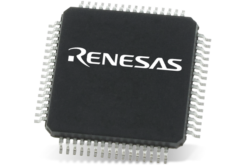Toshiba and Nordic Semi team-up to launch the World’s Smallest BLE Module

Nordic Semiconductor today announces that Tokyo, Japan-based multinational conglomerate, Toshiba Corporation, has selected the 2.48 by 2.46mm wafer level chip scale package (WLCSP) version of Nordic’s nRF52811 Bluetooth Low Energy (Bluetooth LE) System-on-Chip (SoC) to provide the core processing power and wireless connectivity for its ‘Bluetooth module with SASP Technology’. The module with integrated antenna comes in a miniaturized 4 by 10 by 1mm form factor, weighs 0.09g and is the world’s smallest Bluetooth LE module of its kind, according to Toshiba.
Flexibility for developers
The company’s proprietary SASP (Slot Antenna on Shielded Package) technology is designed to minimize the size of the module by using the shielded packaging to house part of the antenna. As a result, the amount of area the remaining length of antenna takes up on the module PCB, and the corresponding component exclusion zone (“keep-out zone”), is reduced compared to competing modules. In addition, unlike competing modules, the keep-out zone does not extend beyond the boundaries of the module’s PCB. This offers developers greater flexibility in placement of peripheral components such as connectors and sensors, for example on the backside of the end-product PCB, further reducing end-product size.
Powered by Nordic’s nRF52811 SoC, the Bluetooth module with SASP Technology includes not only the antenna, but two crystals, and the passive components for RF and DC-to-DC regulator operation.
Nordic provides impressive software and demo sample codes to aid development
Keiju Yamada, Toshiba
Fully-automatic power management
The module enables robust processing and multiprotocol wireless connectivity in applications where both space and cost are constrained – notably clothing/wearables such as smart watches and ear-worn devices for health monitoring and exercise analysis, as well as various IoT applications with a limited power supply for sending and receiving data from sensors. The nRF52811 SoC at the heart of the module has been engineered to minimize power consumption with a fully-automatic power management system that reduces power consumption by up to 80 percent compared with the nRF51 Series.
Nordic’s nRF52811 multiprotocol SoC combines a powerful 64MHz, 32-bit Arm® Cortex® M4 processor, with a 2.4GHz radio (supporting Direction Finding, Bluetooth 5.2, Thread, Zigbee, IEEE 802.15.4, and proprietary 2.4GHz RF protocol software) featuring 4dBm output power with -97dBm sensitivity (at 1Mbps in Bluetooth 5 mode), and 192kB Flash memory plus 24kB RAM. The nRF52811 is the first product in Nordic’s low power wireless range to support Direction Finding, which brings precise positioning capability to the high throughput, long range, and enhanced coexistence capabilities of Bluetooth 5. The SoC is supplied with Nordic’s S112 SoftDevice, a Bluetooth 5-certified RF software protocol stack for building advanced Bluetooth LE applications. The S112 SoftDevice features Peripheral and Broadcaster Bluetooth LE roles, supports up to four connections, and enables concurrent role operation.
“We selected Nordic’s nRF52811 SoC for our Bluetooth module with SASP Technology due to the chip’s low cost, compact size, and low power consumption, combined with its generous Flash memory allocation,” says Keiju Yamada, SASP Project Leader for Toshiba. “Nordic provides impressive software and demo sample codes to aid development.”
About the NRF52811
The nRF52811 is a Bluetooth 5.2 SoC with extensive protocol support. It is the 4th addition to the nRF52 Series platform, extending the numerous applications and use cases already covered by the platform.
The nRF52811 SoC is capable of the latest and greatest features of Bluetooth 5.1, the most prominent being Direction Finding, taking Bluetooth positioning to new heights.
It is built around a 64 MHz Arm® Cortex™-M4 CPU, and has a range of digital peripherals and interfaces such as PDM, PWM, UART, SPI and TWI. It also has a capable 12-bit ADC. Exceptionally low energy consumption is achieved using a sophisticated on-chip adaptive power management system.
The nRF52811 SoC supports an extensive range of wireless protocols. It supports Bluetooth Low Energy, and is capable of Bluetooth Direction Finding in addition Long Range and 2 Mbps. Thread, and 2.4 GHz proprietary protocols are also supported. It has 4 dBm TX power and has been optimized to offer the best RX sensitivity of all SoCs in the nRF52 Series:
- Bluetooth LE – Long Range: -104 dBm
- Bluetooth LE – 1 Mbps: -97 dBm
- Thread: -101 dBm
The nRF52811 SoC is supported by the nRF5 SDK, providing examples, libraries and drivers to get started. nRF5 SDK for Thread and Zigbee offers limited Thread support.
The nRF52840 DK is the recommend development kit, emulating the nRF52811 SoC, and can be used as a starting point for development before moving over to a custom board. Please note that this development kit does not support Bluetooth Direction Finding.
The nRF52811 SoC comes in our smallest package, a 2.48×2.46 mm WLCSP package, together with two QFN packages. It is drop-in compatible with the nRF52810 SoC in all package variants:
- 6×6 mm QFN48 with 32 GPIOs
- 5×5 mm QFN32 with 17 GPIOs
- 2.48×2.46 mm WLCSP32 with 15 GPIOs
Datasheet can be found here
What is a Slot Antenna on Shielded Package?
The information on the proprietary SASP technology is scarce (at the moment), the latest Bluetooth module with SASP appears to be a variety of substrate integrated waveguides.

Substrate integrated waveguides (SIW) are a newer transmission line (~20 years old) that appear to have been attributed to researcher Ke Wu. The SIWs are based on rectangular microwave waveguide technology. Waveguides contain electromagnetic energy inside a metallic transmission path and only allow propagation at the excitation point (i.e., the slots).
As mentioned, the new Bluetooth module is 4 mm (W) x 10 mm (L) x 1 mm (H) mm in dimension. For comparison, the research from the University of Perugia (above) is a 4.5 GHz SIW measuring ~4.5 mm in length (W undefined).
The fact that wavelength is related linearly to antenna size potentially indicates that the new SASP technology could be a 2.45 GHz SIW antenna.
Source: Nordic Semiconductor














